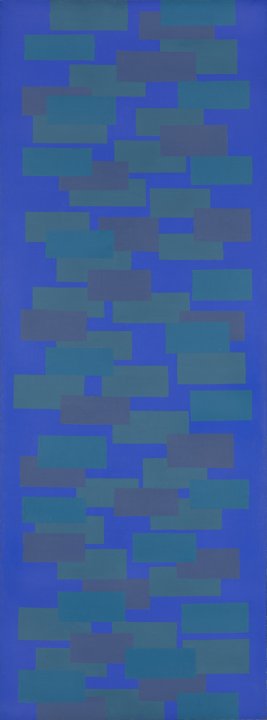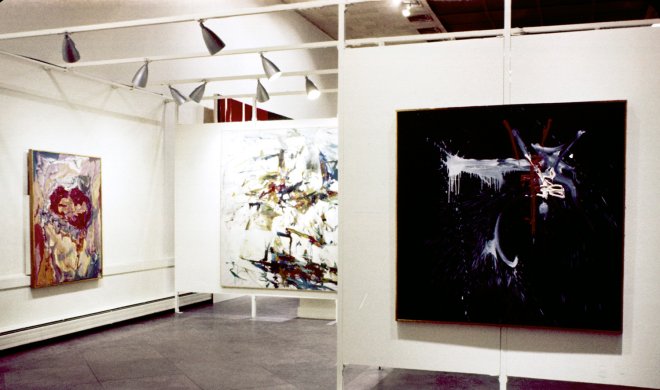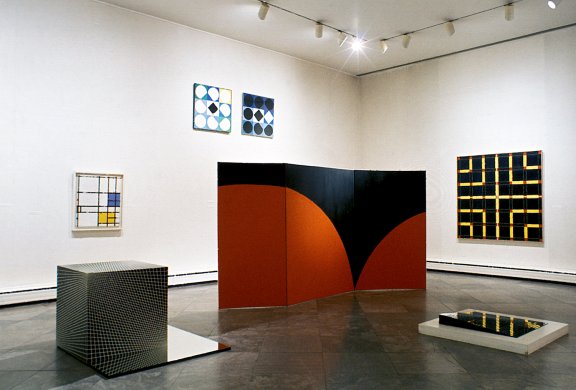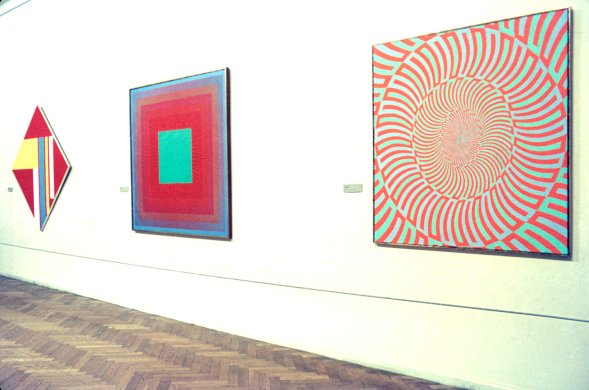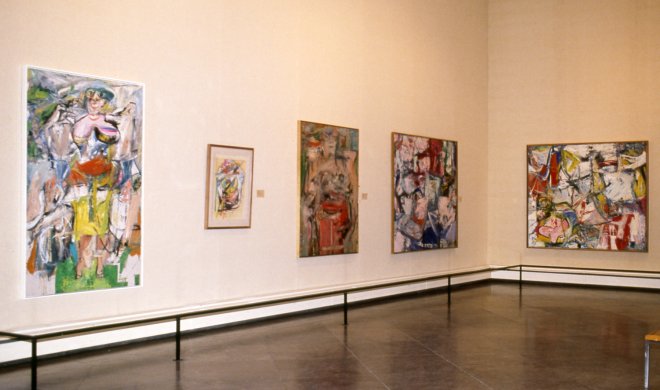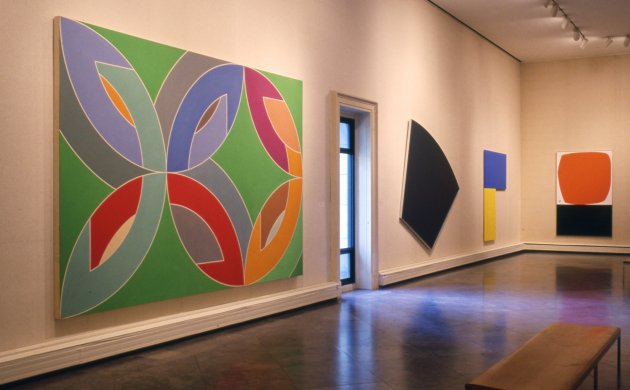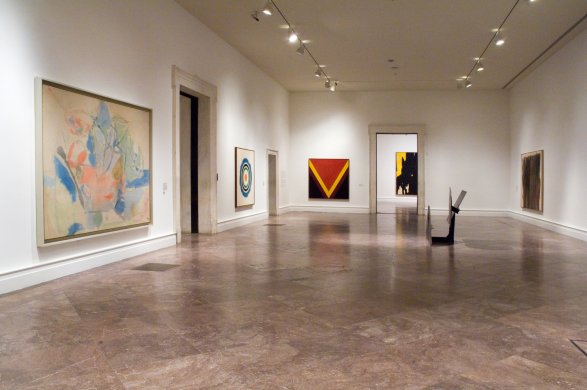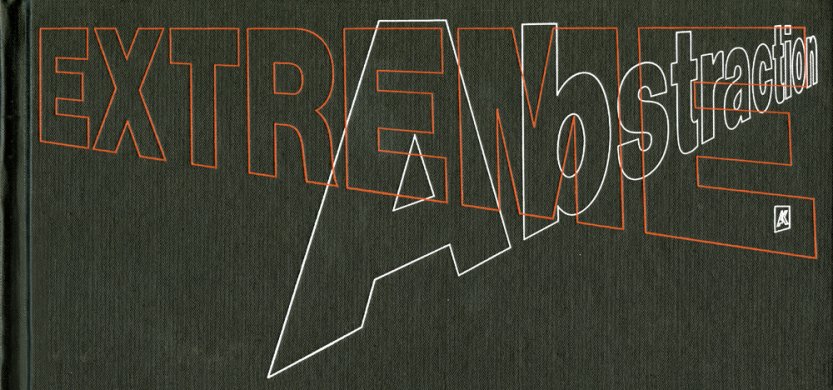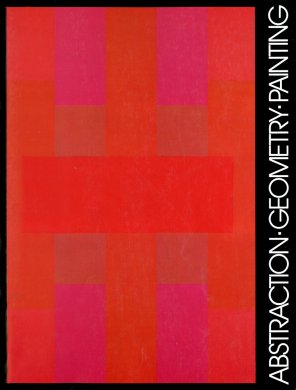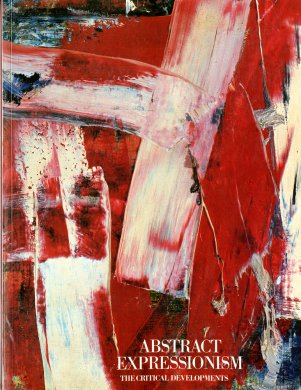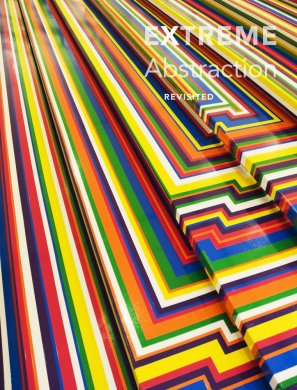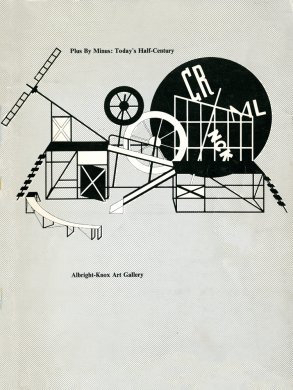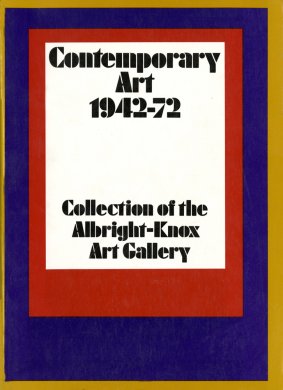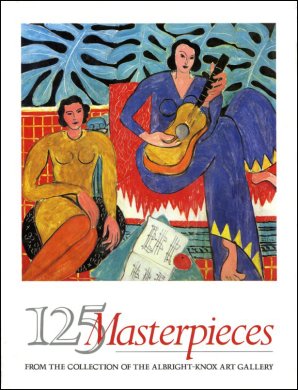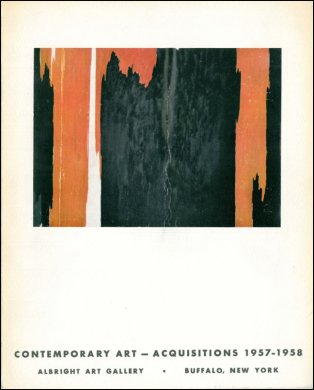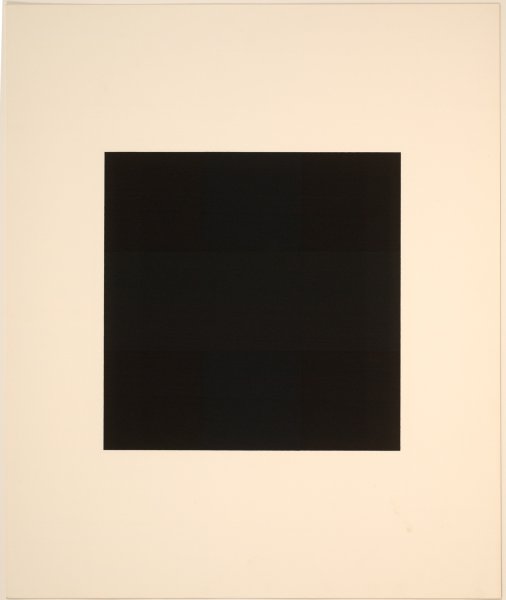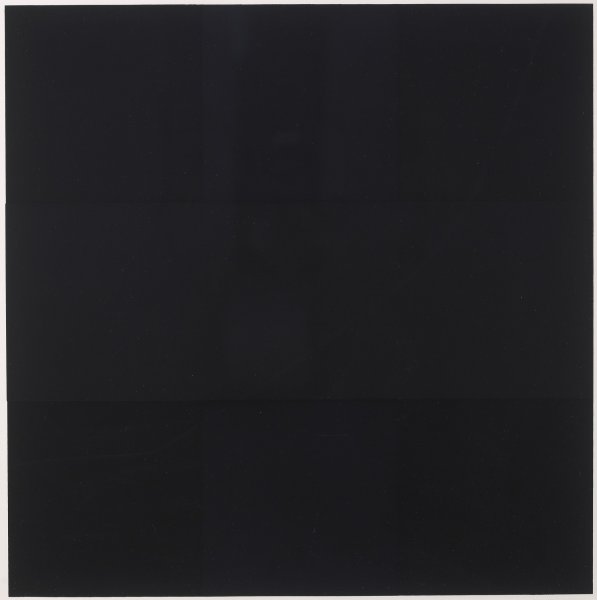Ad Reinhardt
American, 1913-1967
No. 15, 1952
Artwork Details
Currently on View
Collection Highlight
Materials
oil on canvas
Measurements
support: 108 1/4 x 40 1/4 inches (274.96 x 102.24 cm); framed: 110 9/16 x 42 1/2 x 2 3/4 inches (280.82875 x 107.95 x 6.9469 cm)
Collection Buffalo AKG Art Museum
Credit
Gift of Seymour H. Knox, Jr., 1958
Accession ID
K1958:42
Ad Reinhardt spent the bulk of his career tirelessly arguing against excess, hypocrisy, and superficiality in painting. He desired to purge from his own work all color, gesture, and references to genre, and committed himself to a principal geometry of flat rectangles along vertical and horizontal axes. No. 15 presents green and brown brick-like shapes against a deep blue field. They appear to vibrate against this background, creating an illusory sense of depth—as if they are floating under water. While Reinhardt placed these forms asymmetrically within his composition, they gravitate toward a central vertical axis, drawing attention to the imposing height of the canvas.
In 1953, Reinhardt entirely renounced color, and by 1960, he devised the standard format for his final series of works, entitled the Black Paintings. These works are typically divided into a three-by-three square grid and painted in all black with only minor tonal variations. By harnessing only the most elemental of pictorial means in these images, Reinhardt had arrived at his final motif.
